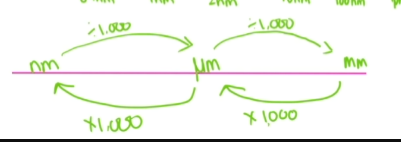Biology module 2
1/18
Earn XP
Description and Tags
foundations of biology
Name | Mastery | Learn | Test | Matching | Spaced |
|---|
No study sessions yet.
19 Terms
eukaryotic cell structure and function (animal+plant) 10 terms
Nucleus= chromosomes that are wound up and enclosed in a nuclear envelope controls cell activity and make ribosomes
Plasma membrane= made from lipids and proteins controls the movement of things going in and out the cell
Mitochondria= double membrane, contains the enzymes for respiration and produces ATP for aerobic respiration
Ribosomes= very small organelle found in the cytoplasm or endo plasma reticular where proteins are made
Golgi apparatus = fluid filled membrane that packages and process proteins and lipids for secretion or delivery to other organelles
Golgi vesicles= transports the proteins and lipids
Rough endoplasmic reticulum (RER) = lots of ribosomes around it and processes the proteins made
Smooth endoplasmic rectum = synthesises and processes lipids
Cytoplasm = where most of the chemical reactions take place
Lysosome = contains digestive enzymes that break down waste materials in the cell
eukaryotic cell structure and function (plant only) 6terms
Chloroplast = where photosynthesis occurs and contains chlorophyl double membrane
Cell wall = provides structural support and protection; made of cellulose.
Vacuole = large sac that stores water, nutrients, helps maintain pressure inside the cell
Adaptations of eukaryotic cells
RBC:
Biconcave shape for increased SA and o2 diffusion
No nucleus so they can store more haemoglobin and bind more o2
small intestines + lungs
SI have microvilli that increase surface area Lungs have alveoli which increase surface area for gas exchange.
they also have a large blood supply through capillaries that are 1 cell thick
Storgage
fat cells have large lipids store
Energy requirements
Muscle cells have large amounts of mitochondria to carry out lots of respitation and ATP for areobic respiration in the joints
nerve cells are the same
Secretion
cells that secrete substances need a large golgi apperatuss need lots of ribosomes
Transport
active transport need carrier proteins and channel proteins and ribosomes
Prokaryotic cells
no membrane bound organelles
ribosomes are 70s
cell wall made of murine
flagella help its mobility
DNA in soiled strands and plasmids
may have capsules that secrete substances to protect it
units and conversions


Microscopes
light microscope | transmission electron microscope | scanning electron microscope |